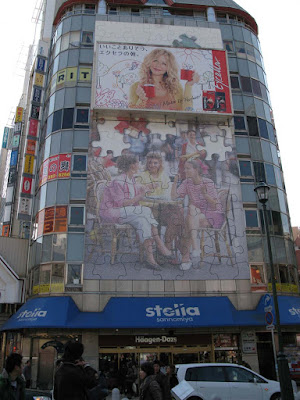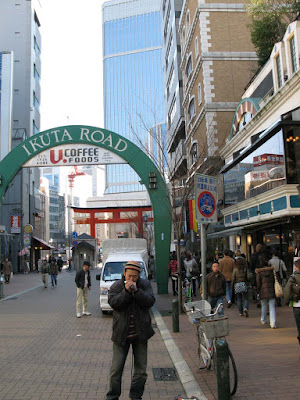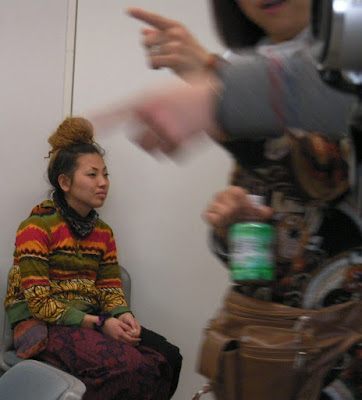
Conan the Chihuahua prays with his master at a Zen temple in Okinawa (Image borrowed from MSNBC.com.). Read the whole story:
Link to story at MSNBC.com
http://www.msnbc.msn.com/id/23774245/wid/11915773/
In Body/Comm class we discuss many different examples of Japanese gesture. This semester we have discussed Buddhist mudras, our favorite coming from the story of Buddha and the Drunk Elephant. Yesterday we were analyzing the para para and other dance gestures in Maeken's Trance Project video. All of these things seemed to come together in the Zen dog story above.
But we might want to ask, is this visual anthropology? Or yet another example of weird Japan? There are a number of blogs that deal with weird aspects of Japan and Asia that have some great photos and videos. The danger of these blogs of course is the representation of Japan as being uniformly weird. Japan is often stereotyped as a homogeneous nation, so when we see these weird things, we might believe that such things are normal to the Japanese when in fact they are not. Japan has a population of over 127.4 million people all squeezed into an area slightly smaller than the state of California. So it makes sense that weirdness and creativity run rampant. Check out these sites for more doses of weirdness; place the photos and stories in a larger context and we might indeed have some data for visual anthropology...
Tokyo Mango: Everything you ever wanted to know about the birth city of Godzilla, Gundam, all-you-can-eat shabu shabu, panty vending machines, and me.
http://www.tokyomango.com/tokyo_mango/
An Englishman in Osaka: he's english, he's a man, and he's in osaka.
http://anenglishmaninosaka.blogspot.com/
TV in Japan: This is what TV is like. In Japan.
http://tvinjapan.com/
Weird Asia News brings the best of weird, strange, funny, odd, and just plain crazy news and stories from the lands of the Far East. We have 6 authors who dedicate their time to bringing you the best breaking news possible.
http://www.weirdasianews.com/
If you have some recommendations for similar sites, please share via a comment.






































